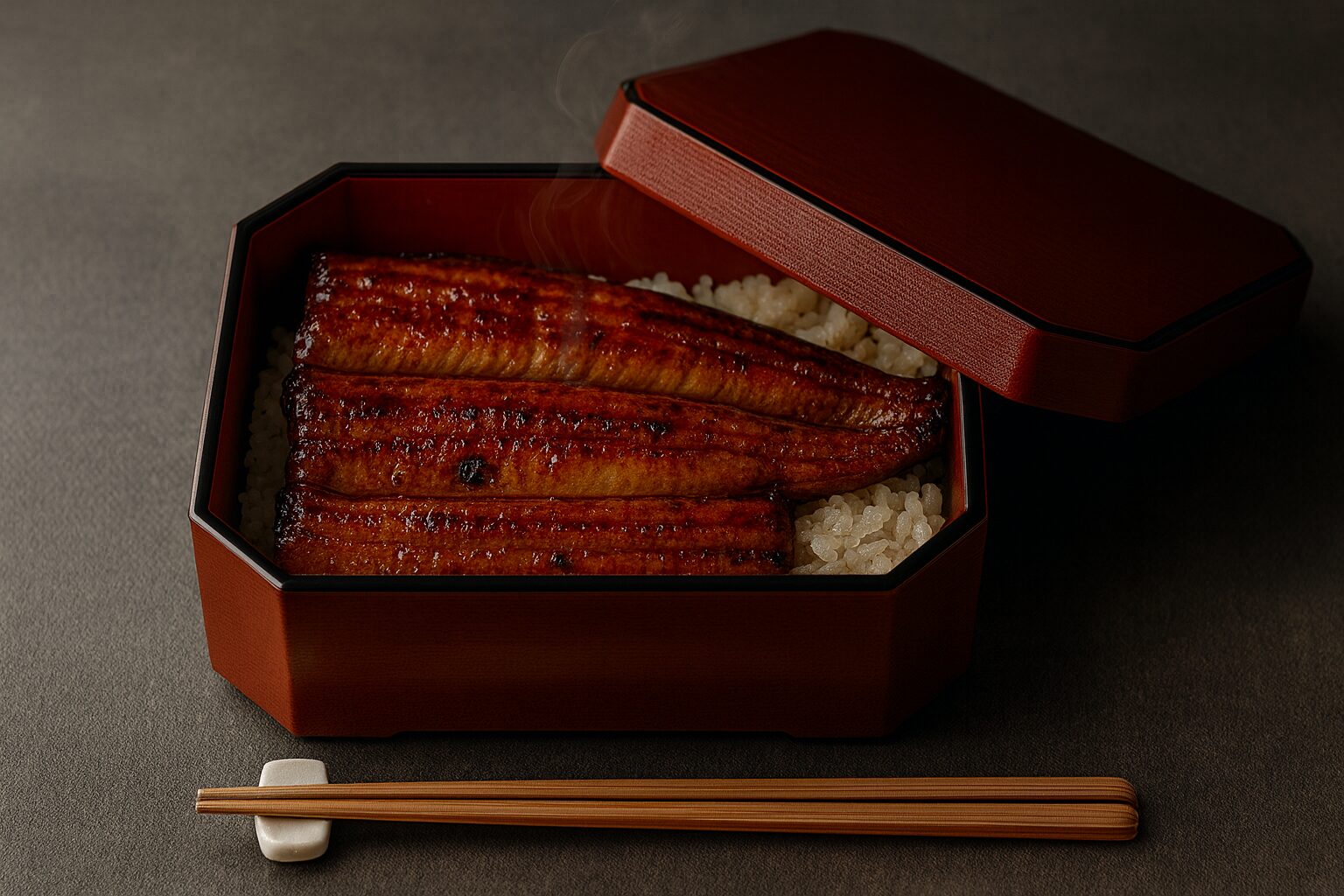By Kokoro Still
Before the lid lifts, the lacquer holds a hush. Heat gathers under a thin sheen, and the glaze’s sweetness sits close to the lacquer.
In that brief pause—between the hands and the first glance—Kokoro can be felt.
Unajū (鰻重) is grilled eel over rice, served in a lacquered box (ojū / jūbako) with a fitted lid. The eel is brushed with tare—a sweet soy glaze—during grilling.
The lid keeps warmth and aroma for the first moment; a clear kimosui (eel-liver broth) and a small dish of tsukemono (Japanese pickles) often accompany it. Sanshō (Japanese pepper) is added to taste. Preparation varies by region—some steam the eel before the final grilling; others grill through without steaming—but the box and its lid shape the experience: a pause, then release.
The Box in the Hands
I drew the box closer. Lacquer felt cool against the fingers; heat pressed upward from within. The lacquer held a soft reflection of the room.
Nothing hurried. The pause held.
Lifting the Lid
With both hands on the sides of the lid, the lid rose a finger’s height—enough to break the seal. I held it for a breath as the first steam slipped out.
Then I drew the lid back and lifted it level, interior up, setting it to the side slowly and without a sound. Color settled before aroma did: dark sheen, white rice, a line of light along the rim.
First Bite
The chopsticks met the flesh first; it opened without effort, and the rice gathered around it. The tare stayed present, never loud.
Between warmth and grain, balance was found—nothing extra asked for, nothing missing. In that balance, Kokoro could be felt.
A Sanshō Line
I shook a light line of powdered sanshō—brown, though its aroma is green-citrus. It lifted the center of the taste, not stronger—just taller.
The broth beside it stayed clear, like a margin that keeps the page from crowding.
After
When I was done, chopsticks lay across in front—tips left on the rest. Heat thinned; sweetness stayed near the rim.
I set the lid back on the lacquer—not to hide anything, only to keep the pause intact.
Unajū is not a spectacle. It is a lid, a breath, a first glimpse—the way warmth, rice, and tare meet without noise.
In that sequence, before and after the lift, Kokoro can be felt—quiet, steady—in the small architecture of box and pause.



Comments